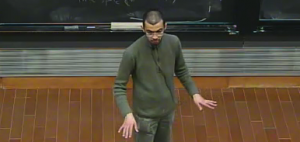
Title: The Symplectic Topology of Stein Manifolds
Speaker: Mohammed Abouzaid, Simons Center
Date: Tuesday, April 24, 2012
Time: 1:00pm – 2:00pm
Place: Auditorium Room 103, Simons Center
Abstract:
The familiar classification of Riemann surfaces by the genus and the number punctures essentially states that each smooth surface admits a complex analytic structure which is unique up to deformation. Moreover, every open Riemann surface admits a proper analytic embedding in affine space.
In higher dimension, the property of admitting such an embedding distinguishes a class of complex manifolds which are called Stein; they are the analytic analogue of affine varieties. In the early 90’s, Eliashberg proved an existence theorem for Stein structures: he showed that the condition that a manifold admit such a structure is entirely determined by its smooth topology. The question of uniqueness (up deformation), remained open. By making full use of the modern machinery of symplectic topology (i.e. Floer theory and the Fukaya category), the last five years, starting with work of Seidel and Smith (followed by McLean, and Bourgeois-Ekholm-Eliashberg), has seen much progress on resolving the question of uniqueness in the negative. I will particularly focus on the case of Stein structures on manifolds diffeomorphic to euclidean space, and explain some ideas behind the proof that, in real dimensions greater than 10, the set of equivalence classes of such Stein structures (under deformation) maps surjectively to the set of sequences of prime numbers. In particular, it is uncountable.

